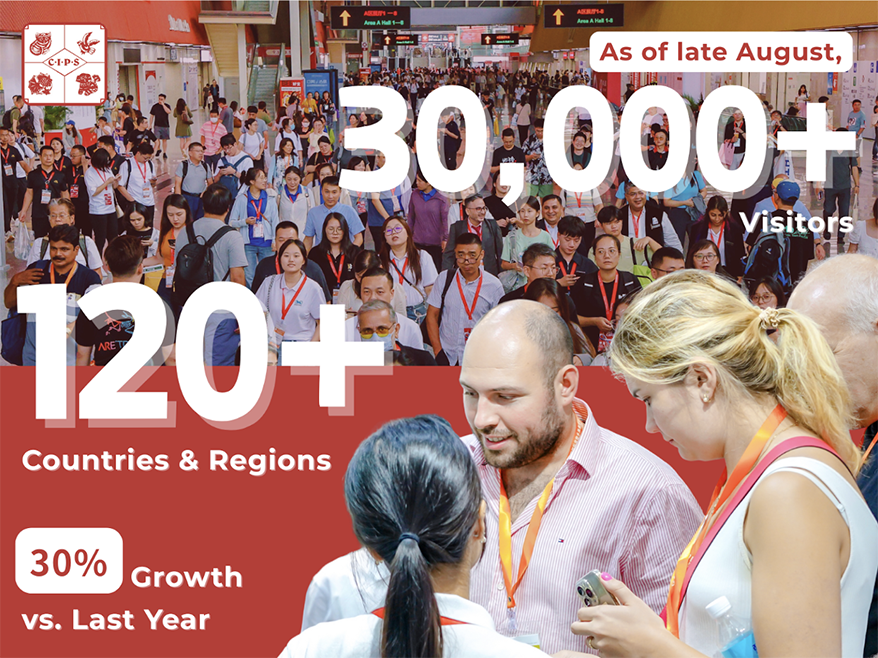
(PRESS RELEASE) When the China International Pet Show (CIPS) opens its doors this November (13th to 16th) in Guangzhou, it will mark nearly three decades of growth from a regional fair into one of the pet industry’s most international meeting points. The 29th edition arrives at a moment when global industry chains are shifting, sustainability is increasingly seen as a business imperative, and retailers are under pressure to balance assortment with efficiency.
Trade First: Buyers and Sellers on the Same Clock
As of late August, more than 30,000 professional attendees had registered from over 120 markets, a figure that is roughly 30% ahead of last year. Confirmed participants include Fressnapf, Cobasi, Plaček, Dohse Aquaristik, and PetSmart—a line-up that spans Europe’s largest chains, aquatics specialists, and US mass retail. Their presence shows the breadth of sourcing interests converging in Guangzhou.
To channel this momentum, CIPS has sharpened its B2B matchmaking system. Buyers and exhibitors pre-select one another online, then meet in 25-minute sessions on site from November 13 to 15. Participation is free for approved buyers and exhibitors, with multiple time slots each day. The design is practical: less randomness, more qualified matches.
Industry in View: A Broad but Selective Floor
Advertisement
Behind the numbers is a floor designed to capture the industry’s supply base in one place. CIPS 2025 will host over 1,200 exhibitors, covering the full spectrum of categories including cats and dogs, aquatics, reptiles, small pets, exotics, and birds. Over 80% are integrated suppliers with design, R&D, and manufacturing capacity—an increasingly critical model for private-label and compliance-driven sourcing. In total, they represent companies accounting for roughly 70% of global output.
The line-up illustrates both scale and specialization. Established firms will present mass-market food, supplies, and hygiene lines, while newcomers highlight functional diets, sustainable materials, and design-led products. Aquatics suppliers focus on filtration, habitats, and breeding technologies, while hardware makers bring smarter, connected devices. Recyclable packaging, natural ingredients, and energy-efficient processes recur across categories, pointing to the direction of product development.
Innovation and Responsibility: Beyond Novelty
That direction is also evident in the show’s dedicated programs. The CIPS Innovation Award underscores how competition is evolving: products are assessed not only for originality but for technical merit and commercial potential. Entries in nutrition, hygiene, aquatics, smart devices, and packaging are reviewed by a combined panel of experts and buyers, balancing innovation with practical market potential.
Equally central is sustainability. The “Green Paw Prints, Love for Earth” initiative, now in its third edition, will highlight firms recognized as “Green Pioneers.” Their advances in recyclable packaging, renewable resources, and supply-chain transparency reflect how environmental priorities are shifting from rhetoric to practice. Together, the award and sustainability program sketch a picture of innovation that is not just new, but necessary.
Thought Leadership: Conferences with Market Weight
If the exhibition floor shows what the industry is producing, the conference program explores why and how. The CIPS International Pet Industry Convention (CIPIC) runs across two days under the themes “Unlimited Connection” and “Unlimited Development”. Day One focuses on collaboration and innovation—how private-label partnerships are evolving and how retailers are adapting to changing consumer behavior. Day Two turns to sustainability and responsibility, from ESG frameworks to traceability and circular models already being tested in practice.
Advertisement
The 2nd Aquatic Industry Convention, organized with Ornamental Fish International (OFI), adds a focused category lens. Its theme—“Potential Through Hard Times: Reform, Innovation, and Aquatic Development under Globalization and Regionalization”—will cover regulatory shifts in Europe and North America, fast-growing markets like Vietnam, Brazil, and India, and the sustainability challenges unique to aquatics.
Viewed together, CIPIC and the 2nd Aquatic Industry Convention underline the multiple pressures now shaping the sector: bringing innovation to market, meeting new standards of responsibility, and adapting to uneven regulation across regions.
Why It Matters
With buyers from 120+ countries, a floor weighted toward capable suppliers, and conference programs tackling industry-defining themes, CIPS 2025 positions itself as a platform for trade, learning, and forward-looking exchange. For an industry navigating fragmentation and change, Guangzhou in November offers a chance not just to browse, but to decide.